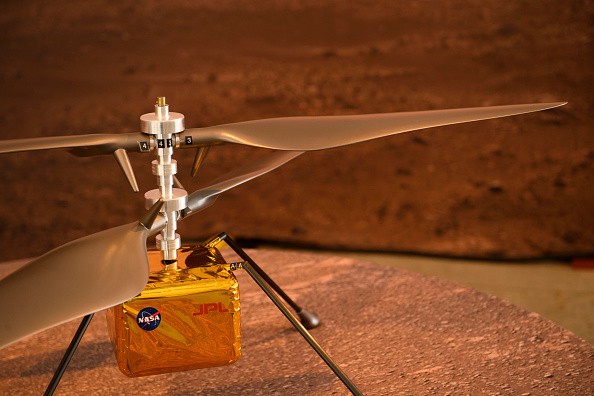NASA wants to keep the record-breaking stint of the Ingenuity Mars helicopter going. Well, at least until a bit later this year.

This is due to how the helicopter has survived Mars with almost no sign of mechanical decline. As such, the engineers at the NASA Jet Propulsion Lab (JPL) have decided to extend the little copter's flight operations on the Red Planet until September, writes Digital Trends.
Their reason? So the aircraft can "set more records." This was the statement that the JPL team made after they revealed new adjustments to Ingenuity's flight software. The updates, they say, will now allow the helicopter to fly higher (an insanely difficult feat due to how thin the air on Mars is. Aside from that, it will also allow the helicopter to change its airspeeds on the fly (pun intended).
Lastly, the JPL engineers are also looking to add so-called terrain elevation maps, and a feature that allows it to avoid landing hazards on its own.
This is an excellent update to an otherwise almost scot-free record for the Ingenuity Mars helicopter, which NASA didn't even have much confidence in when it first started on the Red Planet.
According to NASA's Thomas Zurbuchen, who works as the associate administrator for the agency's Science Mission Directorate, they didn't even know if controlled, powered flight on the barely-there atmosphere of Mars was even possible.
But now that the helicopter has proven successful in its 21 test flights so far, the agency looks to further see whether Ingenuity will be able to help the Perseverance rover explore Jezero crater. This crater is what scientists call a potential hotbed of discoveries, considering they determined that it used to be an ancient delta where liquid water once flowed (via NASA).
With the combined capabilities of Perseverance and Ingenuity, scientists are hoping for the discovery of final, conclusive evidence of prehistoric microbial life-proof that Earthlings were never alone in the universe to begin with.
What NASA Plans To Do With Tech Like Ingenuity's
The Ingenuity Mars helicopter, according to Space.com, was supposed to be a one-off thing. But it has obviously performed beyond initial expectations, and the agency is now looking forward to using similar tech for exploring other heavenly bodies in the distant future.

A report by the BBC revealed that such an aircraft has immense exploration potential, because it can cover a wider territory in far less time compared to a wheeled rover.
Now that NASA has proven that controlled, sustained flight is possible on another planet whose atmosphere differs from Earth's, they want to keep it going. One of their future projects, codenamed Dragonfly, will be sent to Titan (Saturn's largest moon) in the near future to look for signs of life there. It is scheduled to launch in 2026, with the small car-sized drone arriving on Titan in 2034 (via NASA JHU APL).
It can be safe to say that Dragonfly and Ingenuity won't be the last human-made aircraft to fly in alien skies.
Related Article : China to Create Mars Helicopter Like NASA's Ingenuity; First Crewed Mission Set in 2033
This article is owned by Tech Times
Written by RJ Pierce
ⓒ 2025 TECHTIMES.com All rights reserved. Do not reproduce without permission.




